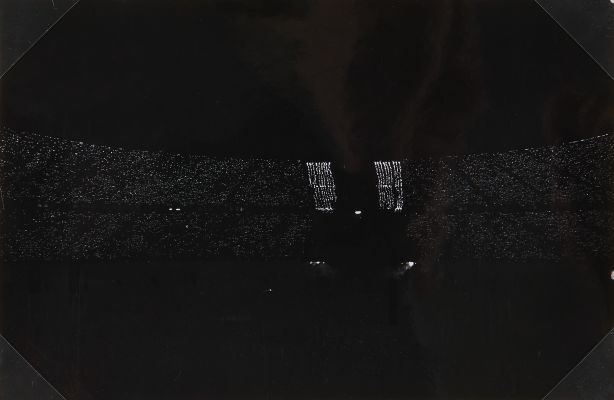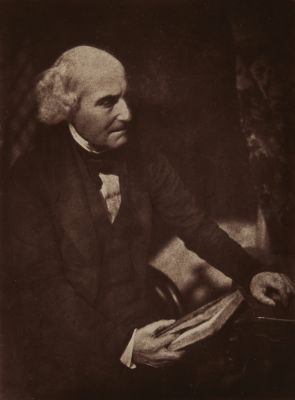
Title
A Specimen of Woodburytype PrintingArtist
Robinson, Henry Peach (British, 1830-1901)Publication
The Art and Practice of Silver PrintingDate
1881Process
WoodburytypeImage Size
8 x 11.2 cmSheet Size
15 x 21 cm
For the frontispiece of their photography manual, The Art and Practice of Silver Printing, the authors H.P. Robinson and William Abney used a woodburytype rather than a silver print as an example of a permanent photograph.
The invention of the woodburytype process is credited to both Walter Bentley Woodbury (1834–1885) and Sir Joseph Wilson Swan (1828–1914). First called photo-mezzotint when Swan conceived of the idea, when Woodbury beat Swan to the patent in 1864 he gave the process his own name, woodburytype. They fought over this in print and in the courts for many years. The same thing happened in 1879 with Thomas Edison (1847–1931) claiming a patent for the electric light bulb, which Swan had already invented. Happily, this time Swan publicly demonstrated his light bulb to a crowd of 700 and then installed electric lights in his own house long before Edison’s claim. Swan won this fight and was offered a partnership in Edison’s company. He went on to receive 70 patents in photography, electricity, engineering, and physics.
Woodbury and Swan were after the same thing in 1864, a permanent photographic image that would not fade or darken.
Reproduced / Exhibited
H. P. Robinson (1830-1901) and William de Wiveleslie Abney (1843-1920), The art and practice of silver printing (New York: E. & H.T. Anthony & Co., 1881).
References
Woodburytype, The Atlas of Analytical Signatures of Photographic Processes by Dusan C. Stulik and Art Kaplan (2013)
Princeton Graphic Arts Collection blog: https://graphicarts.princeton.edu/2017/12/28/how-permanent-are-permanent-photographs/ cited 02/23/23











